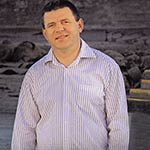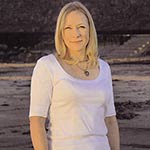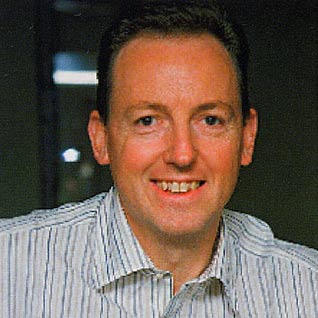Media's new manifesto |
| Much has been made about how media is the new creative, the real force behind effective advertising. Michael Cullen asked some of Carat’s lead team to explain |
AGENCIES MUST EMBRACE CHANGE: CIARAN CUNNINGHAM
“Agencies are at a crossroads where media
agencies can move to the top of the client advisor food chain. The
lines are blurring in terms of what media agencies, creative agencies
and media owners can provide to advertisers, but what is clear is that
advertisers are looking for someone to be the strategic guardian of
their brands in order to deliver consistent communication across all
channels.
Traditionally, this role has been the preserve of
creative agencies but they have been slow to change and adapt to the
new environment. I joined Carat in 1998 and the company is now
unrecognisable from what it was then. A wry smile forms when I think of
the term ‘media bucket shop’ used to refer to Carat by some full
service agency heads. The term is to be treasured as it means we are
being dismissed by the competition as one-dimensional, where our only
focus is on driving media value.
Having a reputation for driving value for clients is of no harm
but there is so much more to what we do and creative agencies
underestimate this. Interestingly, feedback from one recent large pitch
we were involved in concluded that in general media agencies were
stronger strategically than the creative agencies that presented.
‘The biggest failure is the lack of focus on talent’ – Ciaran
Cunningham There are three main issues facing media agencies as they
strive to move to the top of the advertiser food chain and two relate
to people. Firstly, we must attract the right people; secondly, develop
and nurture staff and, thirdly, ensure we are integrating while also
maintaining a high level of specialist skills. The biggest failure in
Irish advertising is the lack of focus on attracting and developing
talent. Rather than focusing on IAPI and the frameworks the institute
provides, agencies should look closer to home and evaluate what
resources they provide to attract, develop and nurture their own
talent.
It is unacceptable that an exciting and rewarding career in advertising
seems to fall way down the pecking order in career choice compared to
other professions. If advertising is not seen as attractive as
accountancy, then there is something wrong.
People are an agency’s biggest resource. It is commercial suicide
if agencies do not invest in people in a meaningful way. Some observers
have said it is difficult for media agencies to differentiate from each
other and some of Carat’s competitors have publicly stated that they
are trying to differentiate themselves. I wonder really.
Carat is fundamentally different from our competitors and it is
exclusively due to our people, how they behave, how they build
relationships with their clients, how they work with media owners, how
they always have a ‘can do’ attitude and how they work effectively with
many partners to deliver for clients. It is an everyday culture.
 |
To build for the future, media agencies must attract the right people with
different skill sets. Dael Wood joined us from the creative agency
Index, where she was managing director. She has a key role in providing
strategic guardianship for advertiser’s brands and also integrating
different skill sets.
Rob Pryce joined us to from Interactive Return, to run our digital
company, Diffiniti. Ashling Brennan focuses on providing clients with
advice on search engine marketing. Five years ago, there would have
been no role in Carat for any of these people.
Developing and nurturing people is probably the area where agencies
– including ourselves – have been weakest. Young talent today are
well-educated, confident and demand that their talents are developed
within a clearly structured framework.
Most advertisers that agencies work with have clear development plans
for their employees and they expect the same from their agency. We are
not there yet, but with help from our network in the UK, we hope to
develop a talent management framework and a performance coaching model
which will set out clear career paths.
If media agencies are to move beyond the commodity areas of “just
doing media cheaply”, then they will have to become adept at
integrating the different specialist skills, be it media planning,
communications planning, digital, data, content, below the line. We
must look beyond the traditional skill sets of a media agency.
Competition for the planning and strategic roles will not just come
from other media agencies but also from management and marketing
consultants, creative agencies and a whole raft of other specialists
who recognise the importance of getting it right.”
STRATEGY MEANS UNDERSTANDING: DAEL WOOD
“In the complex world of seducing audiences through
both traditional and new channels, the principles of reach and
frequency simply are not enough to achieve engagement, differentiation
and breakthrough.
That’s not to say that reach and frequency are not critical – it is
still the way that we measure media effectiveness. It is just that
reaching your audience at the optimal number of times no longer
guarantees that you have been noticed.
Nor does it ensure that you have engaged enough with that audience to
drive action. So what does this all mean in how we plan and buy media?
There are three important principles – understanding consumers, the
brand and integration of thinking.
Consumer insights, bull’s-eye, one-on-one communications are terms
we all bandy around and use to help frame our thinking when building
brands and selling products and services. But what does it all really
mean?
 |
‘Research is not giving us the answers anymore’- Dael Wood How does it
move us from comfortable and measurable media effectiveness to the less
comfortable, higher risk, but more meaningful engagement and action?
Consumers are complex and no longer follow neat and tidy patterns
driven by demographics and for those advanced marketers, resource and
lifestage. The reality is that we have to look beyond definitions to
understand the way consumers are living their lives and thinking about
their futures. Research in its traditional form is not giving us the
answers anymore. Again, as with media measurements, it is still
important and plays a vital role, but we need to think about it in more
meaningful ways. We all understand that at a fundamental level there
are many different types of 35-year-old men, married with one child who
own their home. They are not a valid audience group.
Yet we still talk about them as an audience group. We still like to
label our generations as X and Y and put them in our nice little linear
boxes. But this will not achieve success. We should be thinking along
different lines.
About how the broader changes in our society are impacting on
people. We should stop thinking of technology as a channel to our
audience, but rather how technology is changing our brain structure and
how we behave and process information.
While the brand is a critical driver of the creative idea development
and outside of being part of the briefing process, brand has rarely
been included in media planning. Understanding the brand, the brand
strategy and brand competitive positioning is an integral part of
planning for all our clients. Creating stand-out media plans that
engage with our consumers, but that have no brand relevance are
unlikely to work.
The strategic planning template must make brand key to help develop the
media platform which shapes the strategy. The process brings brand,
business/marketing objectives and consumer definition and insights
together to frame the media approach. Gaps in the thinking can be
addressed before wasting valuable time and money.
We shouldn’t be precious about ownership. Today there are many partners
involved in creating that ‘perfect recipe for success’. Working in
tandem to frame the right strategy, understand the consumer and ensure
the right message is brought to them in a proper way and when they want
to receive it, takes everyone working as one.
A fuzzy concept? No, strategy is about understanding the consumer.”
GOING FOR AEGIS?
Aegis Media Ireland
comprises Carat and its sister companies Brindley, Diffiniti, Isobar
and Vizeum. It is part of the multinational Aegis group which has been
the centre of takeover speculation in recent times, with its biggest
shareholder, Vincent Bollore, planning to sell his 29 per cent stake
“sooner rather than later”.
Among the parties said to be interested
in acquiring Aegis are Martin Sorrell’s WPP, Hellman & Friedman
venture capital and French advertising group Publicis.
STRETCHING CREATIVITY: DAVE WINTERLICH
“Gone are the days when media executives were locked
away in the basement or attic of a full-service agency never to be let
near a client. Superiority complexes are still there in the industry
but the balance of power is definitely shifting.
Clients understand that the starting point is as much about “what are
the most appropriate vehicles to reach my consumer?” as well as “what
should I be saying to them?” It’s not so long ago that the term
‘creative media planning’ would have been deemed an oxymoron by both
clients and agencies alike.
Now the tide has turned and globally we see media agencies taking the
lead in communications planning. Our creative thinking and approach to
media is important. We must pride ourselves on creative media and make
it part of our DNA.
We don’t have the same luxuries as our nearest challengers, who can
automatically pick up media on the back of their creative wing. We have
to work harder, every single piece of business we have we only have
because of our media ability.
 |
Full service agencies can hide behind the creative relationship, but we
haven’t got this safety net and this must make us better. Being a media
independent, we have had to try harder to bring creativity to client
planning and implementation.
Our creative approach to media planning ranges from how we develop
strategies right through to idea generation. We’ve made significant
investment training people in this area through our own network and by
using external training resources.
While it’s true you can’t train people to be creative, you can coach
people in techniques they can use to realise their creative potential.
We need to approach the problems from a different angle like Carat did
with a recent press campaign.
Rather than just recommending regular insertions, we decided to run a
mini-pitch for the budget among some key print media. The initiative is
an example of how you can push the boundaries and deliver fully
integrated, cross-title communications solutions that paid-for
advertising alone could never have done.
To launch Vodafone mobile TV, we became the first advertiser to
integrate digital into our outdoor by building flat screen TVs into
poster frames. Ideas that come from the media agency can often be met
with negativity from creative agencies, but if it’s a good idea and the
client is on board, it will survive and stretch ideas.
No one agency can cover everything but creative agencies are not
designed to distribute content, unlike media agencies. Media agencies
have the distribution capability, relations with the media owners and
the commercial expertise.
Carat won an OMA award for best use of media for our National Lottery
6-sheet Drum poster. It was an idea that we initially proposed at the
pitch, so it was great to see it come to life. But creative thinking
isn’t something to roll out for pitches, it has to be part of everyday
life, for every media independent with ambition.”
SPOILED FOR CHOICE: PETER MCPARTLIN
“Media is now by far the most exciting end of the ad
business. It’s dynamic, it’s innovative and it’s growing. New additions
to our mediacsape over that the last 18 months include Metro, Herald AM, Channel 6, Newstalk going national, more satellite channels, Setanta’s growth in sports broadcasting here and in the UK, The Gloss, new ‘free’ regionals, better printed newspapers and digital radio trials.
There are many new opportunities to engage with Irish audiences and
that’s before you layer in other developments in the online/digital
arena and the plethora of media that have sprung up to serve Ireland’s
new ethnic communities.
Over a billion euro will be traded in the media business this year and
it seems that most boats have been lifted by the high tide in spending.
Maybe not all of the new arrivals will survive when things become
tighter, but you have to applaud the sheer energy and entrepreneurial
spirit of the people behind each of them.
While it’s great to see the emergence of the many new channels, in all
their eagerness to mop up ad cash, many of the internet site owners, in
particular, are failing miserably to tackle the basic issue of traffic
measurement.
We are forever reminded that online is the most accountable medium of
all, yet we don’t have a common and independent metric in this country,
on which all sites can be assessed. So we have site owners claiming
supremacy on the basis of page impressions, unique users or unique
visits.
There are some with selective ABCe audits which always seem to be done
for their highest traffic month and you have those who don’t have any
figures at all but still expect to get ad support. It’s WWW alright…
the Wild, Wild West.
One of the other great frustrations is that often the opportunity to
use smaller niche media is being handicapped by what still seem like
high production to media cost ratios. Don’t get me wrong, I would be
first to support the contention that great creative work should be both
awarded and rewarded handsomely.
But ‘great’ doesn’t always have to equal ‘expensive’ and some brilliant
media-centred messaging opportunities are being missed by an inability
to get a fair balance between ‘exposure’ and ‘production’. There’s no
doubt that the level of professionalism has been raised on both the
media agency and media owner sides of the business.
 |
The days when you used to get a call after an ad had appeared and asked
by a sales rep: “Are we getting’ that?” have long disappeared. For
example, newspapers, spurred on by tabloid titles like The Irish Star
and Sunday World are much more creative and open-minded about providing
solutions beyond a 25 x 4.
The more things change though, the more they stay the same. Even with
all the new arrivals, Irish audiences will continue to expect and make
room for fresh ideas, high entertainment values and compelling
personalities, as well as home-originated content relevant to our lives
as Irish people; RTE TV and Today FM, are proof positive of this.
The challenge for clients has become more complicated, as the range of
channels has grown. Essentially though, it’s still about how to deliver
their messages to often apathetic audiences, across multiple ‘media’
platforms, effectively and efficiently. The formula is still relative
simple: right audience + right environment + relevant message=better
chance of engagement and success.”
STAYING RELEVANT
“There has never been a better time to work in media.
The business is in a constant state of evolution and is now the most
exciting and influential sector of the advertising and communications
business. The Irish media market continues to grow at a pace which is
the envy of many countries worldwide.
 |
Fuelled by our economic performance and a historic under-investment in
advertising, the developments have been great. In tandem, the ever
increasing number of media options, traditional and new, means that
planners have to adapt and update their skills.
While growth levels witnessed during the past decade will slow
down, the dynamism it has created will have lasting benefits. In the
space of ten years, the Irish market has gone from one of the most
staid in Europe to one of the most competitive.
HEAVY STAKES
Carat was last year embroiled
in a tug-of-war after managing director Alan Cox quit to head up
Starcom Mediavest. It was rumoured that Cox may take one of Carat’s
biggest clients, Bank of Ireland with him to the Publicis agency.
In keeping with company policy over senior staff contracts, the matter
was challenged by Aegis. Cox was obliged to go on ‘gardening leave’ but
the matter was settled out of court. Following a lengthy review, Bank
of Ireland remained at Carat. Carat Ireland has over 150 clients, among
them are Adidas, Aer Arann, Beiersdorf, Cadbury, Dell, Diageo, Dunnes
Stores, EMI, Glanbia, Irish Daily Star, National Lottery, Nissan, Sony
PlayStation, Vodafone and Vivas Health.
Media agencies will be tasked to provide clients with relevant and
consistent strategic communications. For those who can stay close to
the consumer, anticipate change and exploit the possibilities, business
opportunities will present themselves in abundance.
Having changed from a locally-owned, full-service industry, the
business now follows along international lines with most expenditure
handled by the big five media groups. The trend will continue as
clients work to maximise the return on investment and agencies strive
for more media volume and tighter overheads.
We must avoid complacency and aggressively promote ourselves as an
invaluable business asset. People, always the backbone of the industry,
must be centre stage. The industry must collectively seek to attract
the most talented graduates available. Critically, having found the
best people, media independents need to invest in their development in
a manner never encountered before.”









